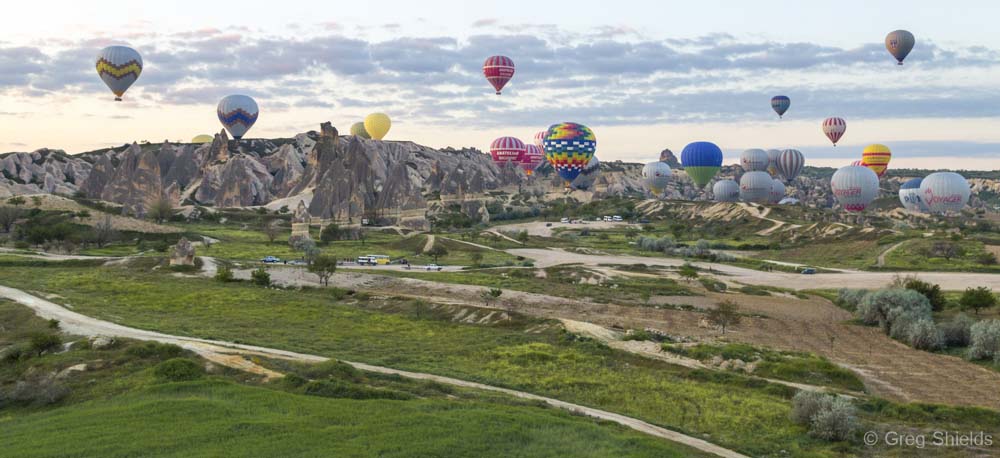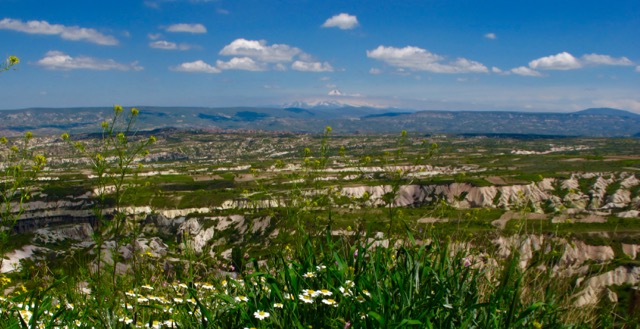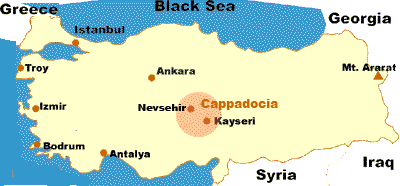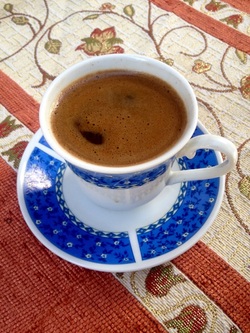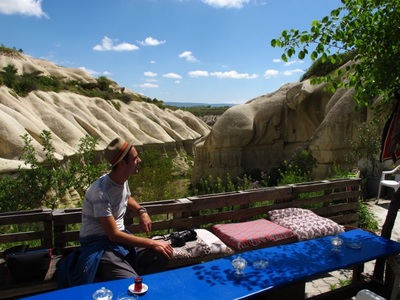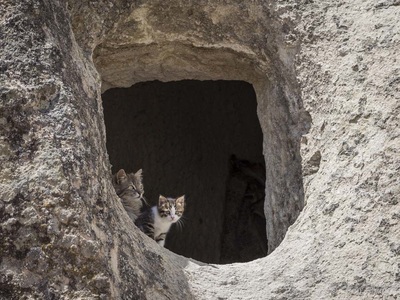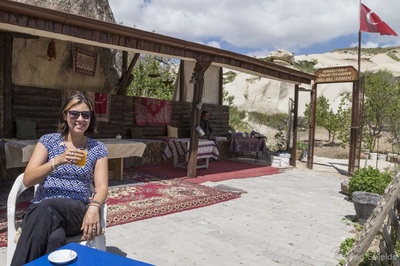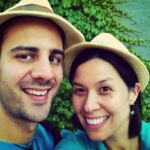En Route to Cappadocia
Of course, I met another aussie on our flight, (aussies are everywhere we’ve found!) Kelly, who works 6 months of the year in Croatia as a tour guide for crazy drunk UK tourists. Apparently drinking is part of the job, sounds appealing but its a Full time job that starts at 8am…..eek.
Despite my reverting to grunge style and feeling horrid, it was so wonderful to see Greggy waiting at the baggage carousel! (Sounds like the beginning of a song….I met you at the baggage carousel, my hair was wild – yours as well…)
If you remember he went to London for a job interview with the NHS whilst I partied in Tokyo for a week. Rainy Istanbul greeted us, the huge ancient church silhouettes like ghosts in the misty sky. A good sleep and then we travelled onwards to Cappadocia. Now if like me, you have no idea what or where it is – read on!
History Lesson by Jade
So Cappadocia was originally named Hatta, and first mentioned in 6th Century texts by Darius I & Xerxes I (yep that Great one – King of Persia).
Situated in the Anatolia region in Turkey, it was home to the Hittite empire from 2nd Century BCE* onwards, they created many cave dwellings carved out of the soft volcanic rock in the valley. The amazing rock formations are due to the volcanic ash sediment being compressed and slowly eroded over the centuries. It’s soft enough to carve inside, but hardens on the outside when exposed to weather, thereby making amazing homes!
Around 1st – 7th centuries BCE the Christians took refuge from persecution in the huge caves underground and above ground.
*In case you’re wondering I use Before Common Era rather than Before Christ dating system as I dont believe in dating our whole civilisation by a single religion. It is, however the same timeline, just a bit more politically correct.
Goreme Open Air Museum
Each morning started with a full turkish breakfast of vegetables, tomatoes, eggs, toast, oranges and turkish coffee. Armed with a full belly we set off to explore the Goreme Open Air Museum, which is really an area with a cluster of these cave houses. It was amazing walking into them – some beautiful carvings, paintings from early Christians still exist despite the devastating damage done by the Muslim conquerers in the 9-11th centuries BCE.
This kind of devastation always makes me sad – and despite what we have learnt wars today are still fought like this. Destroying irreplaceable historical monuments – haven’t we learnt better? A tasty Gozleme for lunch did cheered me up somewhat.
A Walk through Pigeon Valley to meet the locals
Halfway through the valley there was what looked like an open air cafe / home! We ventured in and were greeted by a farmer and his family. Over drinks of cay (turkish tea), and freshly squeezed orange & pomegranate juice they tell us their story.
During Spring and Summer when crops are growing, they come out and live in the cave home, planting crops in the rich volcanic soil. When winter hits, it gets too cold so they pack up (except the stubborn Grandfather) and go to their ‘normal house’ in the next village. Peeking inside their ‘house’ we saw a large cosy cave with decorative turkish carpets over the floor, walls and roof. Tiny windows let in light, while power cords and sockets seemed to come from no where. Laptops and a tv sat in the corner while the youngest boy did his school homework on the floor. They showed us the sleeping mattresses, folded up in a small side hollow during the day, and put out on the large floor at night, and their cats who found a cave room above the family’s and sleep there. It looked very comfortable and I was tempted to stay – but onwards toward the castle!
Full bellies we trudged further uphill to the castle, a natural hollowed out rock fortress for villagers to retreat to in crisis. No one knows when it was built, but it can hold the entire village plus livestock and be highly fortifiable.
When we got into view our jaws dropped – on one side it looks like typical rock houses, other side was caved in exposing rooms and old dwellings.
A local guide told us the sad story, of how people had lived here up until the 1960’s. And in 1965 there was a major landslide, killing many of those families.
Now the whole site is open to tourists to explore. We wandered, climbed and clambered up through holes, down tiny passages, through an ancient 2nd century church and right up to the top windows. Amazing how all the houses have interconnecting passages and doorways – I did wonder about the bathroom situation….
Ballooning over Cappadocia!
Once we all settled into a basket (about 20 of us crammed in) we slowly took the sky, girls near me precariously hanging their iPhones over the edge to get photos.
We floated so high it stole my breath! Then gently came down to brush the fields and fairy chimneys….and as all the balloons around us flared up we saw the rising sun spreading her pink rays over Cappadocia and it was just other worldly!
The underground City of Derinkuyu
I refused to pay for some terrible tour guide to take us out to the famous underground cities for crazy money, (which as you might have guessed was a theme on our trip!) so instead we caught two local buses at the low price of 0.50pence for both.
In the spirit of DIY we managed to solicit an old turkish guy hanging around outside, who spoke a bit of english, to give us a tour. (Why not!? There are many fake tour guides in Turkey, so at least I knew he wasn’t legitimate!). He was very enthusiastic (I’m guessing hanging outside the gates, chatting to other tour guides over turkish cay must’ve given him some info on the city!) and quite funny. He
led us through the caves for free showing us the highlights and proudly chatting to the other turkish guides.What an amazing settlement, we ventured 75m underground (beware claustrophobes) and goes for over 50km, joining another underground city, Kaymakli, via an 8km tunnel.
However, only part of this is open to tourists because of the risk of getting lost!
You descend via a tunnel that slowly shrinks until one person has to double over to walk through. Then it has cleverly designed large round rock disc doors that roll shut in case of invasion, there are around 3 as you descend before getting to the city. As you venture down, you see rooms for livestock first, school rooms, winemaking areas, sleeping quarters and more.
A fantastic design, they disguised the air vents as deep water wells so any invading force would not realise and come looking for them.
*Amazingly whilst we were here National Geographic ran a story of a newly discovered underground city at Nevsehir, which is larger and holds even more secrets!
Next up we have Aphrodisias – our favourite ancient Roman city, and the beautiful Pammukale.
Stay tuned!
Jade & Greg x

